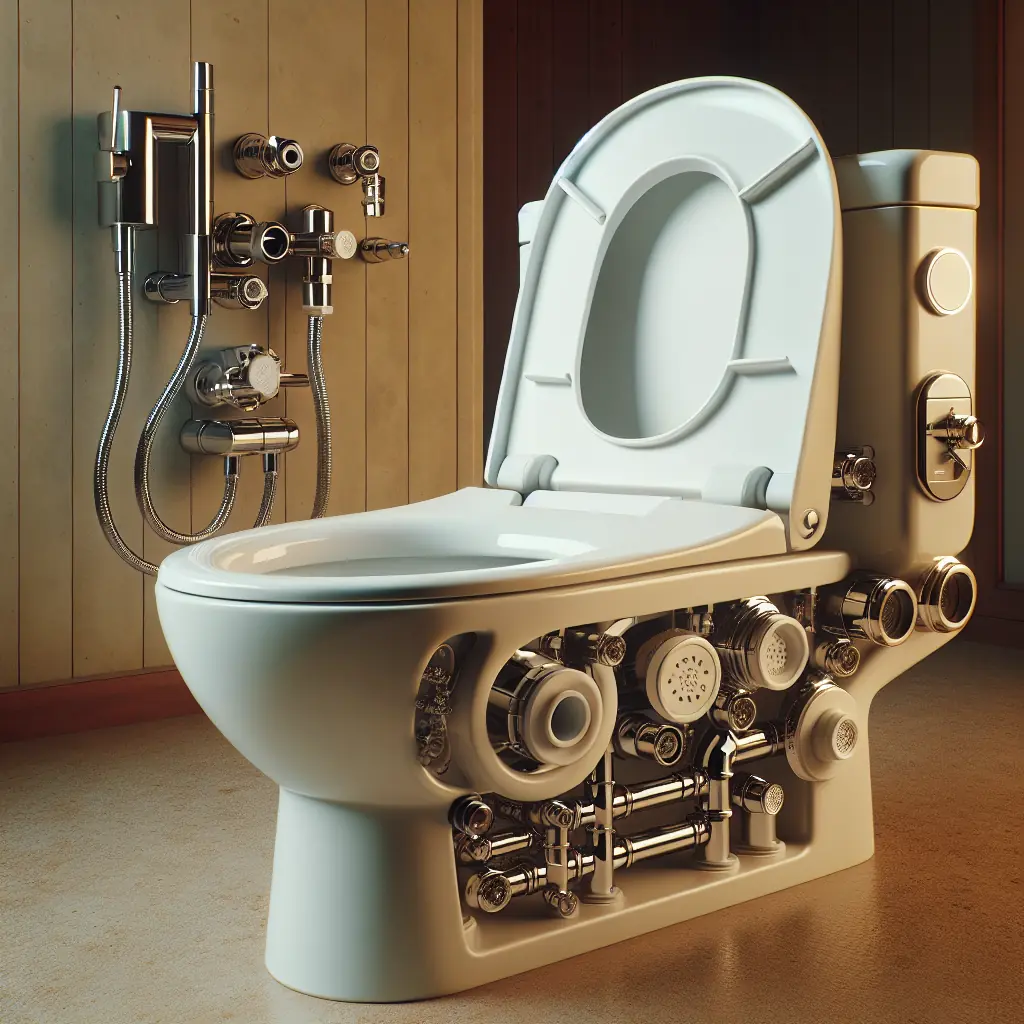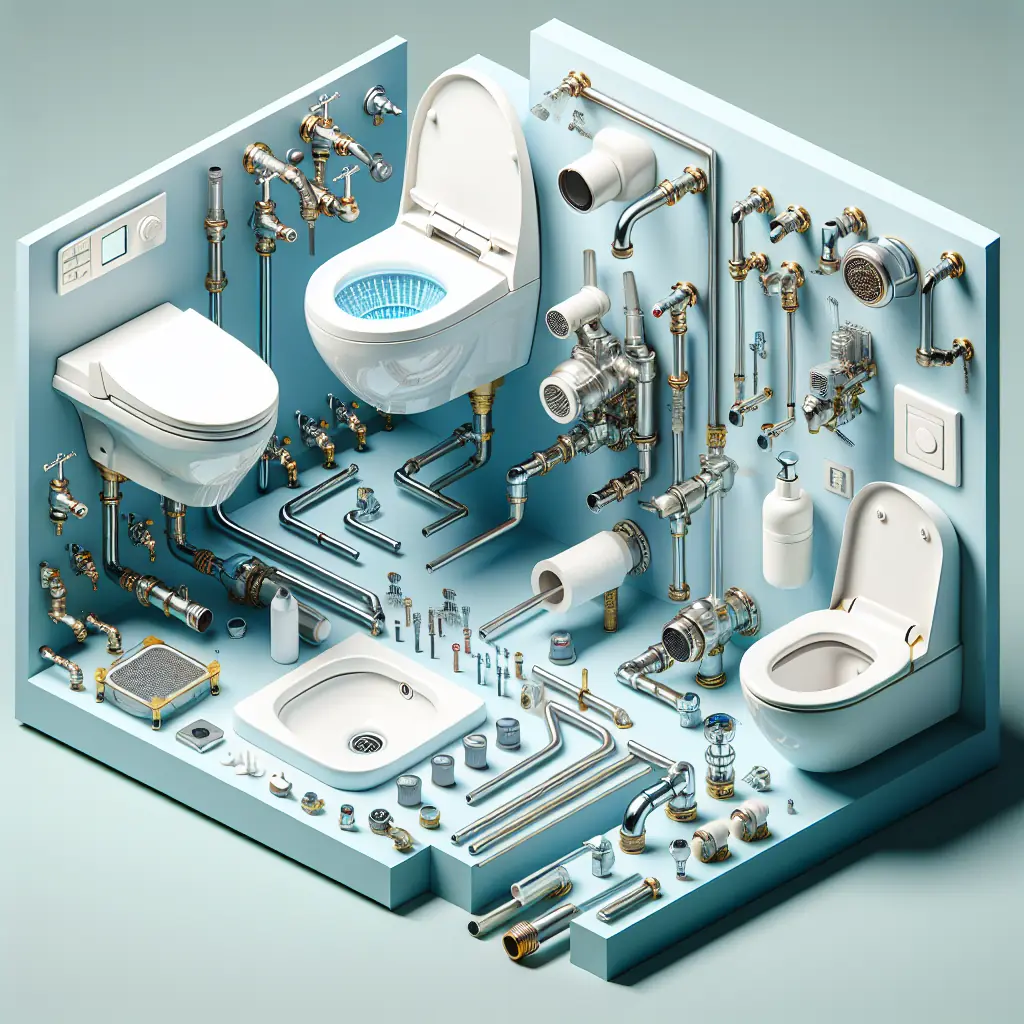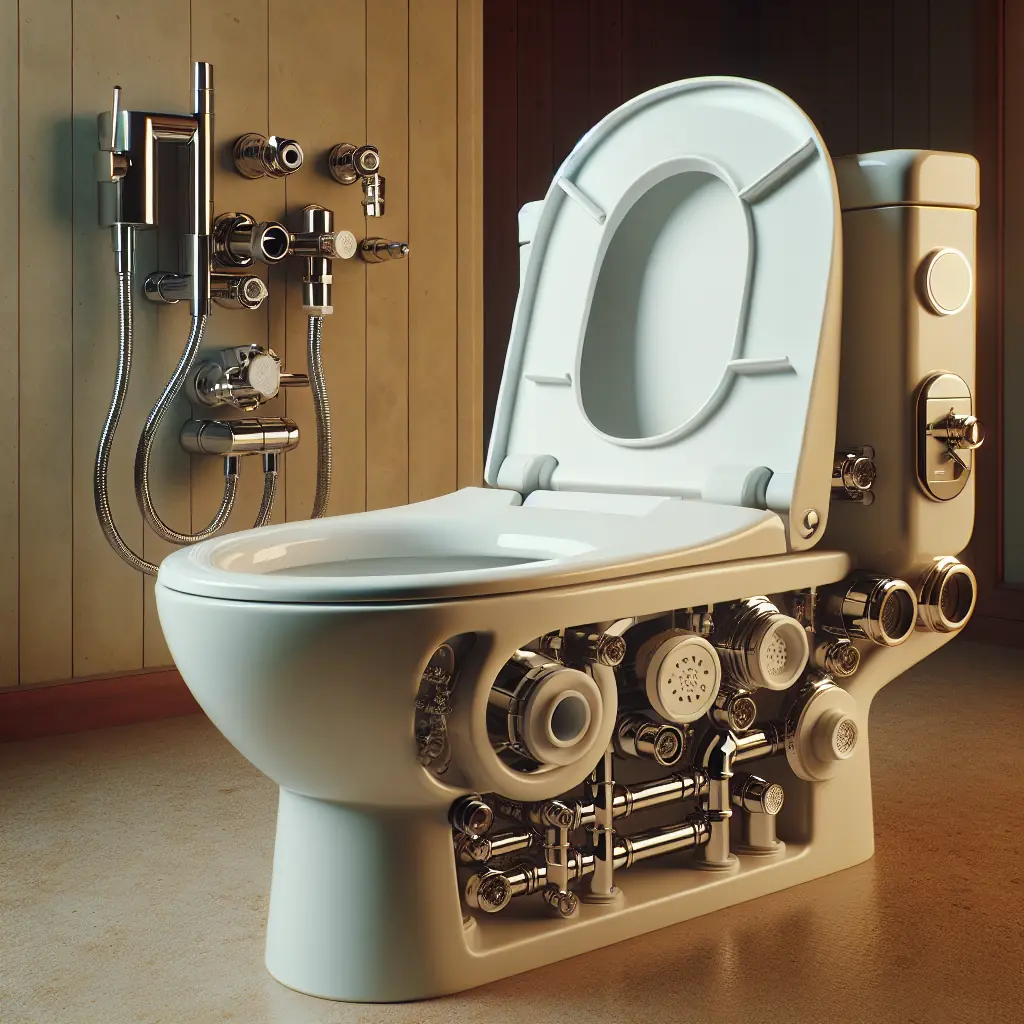Have you ever wondered about the differences in installing a bidet converter kit compared to a standalone bidet? Well, the installation process might seem daunting at first, but fear not! In this article, we will explore the various aspects of installing both types of bidets, highlighting the similarities and differences along the way. By the end, you will have a clear understanding of what to expect and be well-prepared to take on your bidet installation journey with confidence. So, let’s get started and demystify the installation process of bidet converter kits and standalone bidets!
Preparation
Before embarking on the installation process, it is essential to gather the necessary tools and materials. This includes a bidet converter kit or standalone bidet, a wrench, pliers, screwdriver, and any other tools specified in the instructions. Additionally, ensure that you have access to the instruction manual or guide that comes with the bidet unit.
Reading the instructions is crucial to understand the installation process thoroughly. Take the time to read through the manual provided with the bidet converter kit or standalone bidet. Familiarize yourself with the steps involved and any specific requirements or precautions mentioned in the instructions. This will help ensure a smooth installation process and avoid any unnecessary complications.
Installation process of a Bidet Converter Kit
Step 1: Shut off the water supply
To begin installing a bidet converter kit, the first step is to shut off the water supply to the toilet. Locate the valve typically found behind or near the toilet, and turn it clockwise to close it. This will prevent any water flow during the installation process.
Step 2: Remove the toilet seat
Next, remove the existing toilet seat. Usually, this can be done by unscrewing the bolts attached to the seat using a screwdriver or wrench. Set the seat aside in a safe place, as it will need to be reattached later.
Step 3: Attach the bidet attachment to the toilet bowl
Now comes the crucial step of attaching the bidet attachment to the toilet bowl. Follow the instructions provided with the bidet converter kit for proper installation. Typically, this involves aligning the attachment with the mounting holes on the toilet bowl and tightening it securely with screws or bolts.
Step 4: Connect the water supply
Once the bidet attachment is properly installed, it’s time to connect the water supply. This usually involves connecting a T-valve or a hose splitter to the water line that supplies water to the toilet tank. Again, refer to the instructions provided with the bidet converter kit for specific guidance on this step.
Step 5: Adjust the water pressure and temperature
After connecting the water supply, adjust the water pressure and temperature settings according to your preference. Many bidet converter kits provide knobs or levers to control these settings easily. Experiment with different pressure and temperature levels until you find the most comfortable option for yourself.
Step 6: Test the bidet
The last step of installing a bidet converter kit is to test its functionality. To do this, turn on the water supply and allow the bidet to function. Check if the water pressure and temperature are to your liking. Additionally, ensure that there are no leaks or issues with the bidet attachment. Make any necessary adjustments or repairs before completing the installation process.
Installation process of a Standalone Bidet
Step 1: Choose the appropriate bidet type
When installing a standalone bidet, the first step is to choose the appropriate bidet type. Standalone bidets come in various styles, including floor-mounted, wall-mounted, and even portable options. Consider factors such as the availability of plumbing connections and the layout of your bathroom while deciding on the bidet type that suits your needs.
Step 2: Shut off the water supply
Similar to the installation process of a bidet converter kit, the second step for a standalone bidet installation is to shut off the water supply. Locate and close the valve that supplies water to the toilet, ensuring that no water flows during the installation process.
Step 3: Remove the toilet seat and clean the area
Next, remove the toilet seat and clean the area where the standalone bidet will be installed. This involves unscrewing the bolts or hinges that attach the toilet seat to the toilet bowl. Once the seat is removed, thoroughly clean the area to ensure a hygienic installation.
Step 4: Install the bidet unit
Once the area is clean, proceed to install the standalone bidet unit according to the manufacturer’s instructions. This typically involves attaching the bidet to the bolts or brackets provided and ensuring it is securely in place. Take care to align the bidet correctly with the plumbing connections for optimal functionality.
Step 5: Connect the water supply
After the bidet unit is properly installed, connect the water supply to the bidet. This usually involves connecting the bidet’s plumbing to the existing water line. Follow the instructions provided with the bidet for guidance on this step, as specific connections and fittings may vary.
Step 6: Test the bidet
Once the water supply is connected, it’s time to test the standalone bidet. Turn on the water supply and check for any leaks or issues. Adjust the water pressure and temperature settings according to your preference. Test the bidet’s functionality and make any necessary adjustments to ensure optimal performance.
Ease of Installation
Tools required for installation
Both bidet converter kits and standalone bidets require basic tools for installation. These typically include a wrench, pliers, and a screwdriver. However, the specific tools needed may vary depending on the bidet model and the existing plumbing in your bathroom. Always refer to the instructions provided with the bidet unit to determine the precise tools required for installation.
Time required for installation
The installation time for a bidet converter kit is generally shorter compared to a standalone bidet. Installing a bidet converter kit can typically be completed within 20 to 30 minutes, depending on your familiarity with the process and any potential complications.
On the other hand, installing a standalone bidet may take longer, ranging from 1 to 2 hours or even more. The time required is influenced by factors such as the bidet type, the complexity of the plumbing connections, and the level of experience in plumbing installations.
Level of skill required
Installing a bidet converter kit usually does not require advanced plumbing skills. With a basic understanding of plumbing connections and the ability to follow instructions, most individuals can successfully install a bidet converter kit without professional assistance.
However, installing a standalone bidet may require a higher level of skill and experience in plumbing installations. Proper knowledge of plumbing connections and the ability to handle potential complexities are essential. If you are unsure about your abilities, it is recommended to seek professional help for installing a standalone bidet.
Potential difficulties
While the installation process for both bidet converter kits and standalone bidets is generally straightforward, some potential difficulties may arise. These can include issues with plumbing connections, compatibility with existing fixtures, or encountering unforeseen problems during the installation process.
In such cases, it is crucial to refer to the instructions provided with the bidet unit and, if necessary, seek professional guidance. Hiring a plumber or seeking the assistance of a knowledgeable individual can help overcome these difficulties and ensure a successful installation.
Compatibility
Compatibility with different toilet types
Bidet converter kits are typically designed to be compatible with most standard toilets. Whether you have a round or elongated toilet bowl, a bidet converter kit can be easily attached to either. It is important to consider the dimensions of your toilet bowl and ensure that the bidet attachment is suitable for the specific model.
Standalone bidets, on the other hand, require more consideration of compatibility. The layout and design of your bathroom may determine the type of standalone bidet that can be installed. Floor-mounted bidets are the most common and versatile type, suitable for most bathrooms. Wall-mounted bidets require sufficient wall space and may be more challenging to install. Portable bidets offer flexibility but may have limitations in functionality compared to fixed standalone bidets.
Compatibility with existing plumbing
Bidet converter kits are designed to be compatible with existing plumbing connections. As they utilize the same water supply line as the toilet, no additional plumbing modifications are generally needed. However, it is crucial to ensure that your existing plumbing is in good condition and can handle the increased water flow and pressure that the bidet may require.
Standalone bidets may require additional plumbing modifications, especially if your bathroom does not have existing bidet connections. Connecting a standalone bidet to the plumbing system requires proper alignment and the installation of new plumbing connections. It is advisable to consult a professional plumber to ensure the compatibility of your existing plumbing with a standalone bidet.
Functionality
Features of a bidet converter kit
Bidet converter kits offer a range of features to enhance your bathroom experience. These can include adjustable water pressure and temperature settings, self-cleaning nozzles, and even additional features such as heated seats or air dryers. Some bidet converter kits may also include remote controls for added convenience.
Features of a standalone bidet
Standalone bidets often offer more comprehensive functionality compared to bidet converter kits. They typically come with adjustable water pressure and temperature controls, self-cleaning nozzles, and various spray patterns for a customized cleaning experience. Some standalone bidets may also include additional features like warm air dryers, heated seats, and even built-in air deodorizers.
The features available in a bidet may vary depending on the specific model and brand chosen. It is important to consider your preferences and priorities when selecting a bidet to ensure it meets your desired functionality.
Cost
Cost of a bidet converter kit
Bidet converter kits are generally more cost-effective compared to standalone bidets. The price of a bidet converter kit can range from $30 to $100, depending on the brand, features, and quality. While certain premium bidet converter kits with advanced features may be more expensive, there are options available to fit various budgets.
Cost of a standalone bidet
Standalone bidets can have a wider cost range depending on the complexity of the unit and the brand. Entry-level standalone bidets may cost around $200 to $400, while high-end models can range from $500 to over $2000. Additional features and advanced functionalities contribute to the price variation. It is necessary to consider your budget and desired features when selecting a standalone bidet.
Maintenance
Cleaning and maintenance of a bidet converter kit
Bidet converter kits are relatively easy to maintain. Regular cleaning with mild soap and water is usually sufficient for keeping the bidet attachment clean. Additionally, it is advisable to flush the bidet with clean water periodically to prevent any buildup of residue or minerals. Refer to the manufacturer’s instructions for any specific cleaning recommendations or product suggestions.
Cleaning and maintenance of a standalone bidet
Proper cleaning and maintenance are important to ensure the longevity and functionality of a standalone bidet. Cleaning the bidet unit with gentle cleansers and avoiding abrasive materials is recommended. Some standalone bidets offer self-cleaning functions that can be activated periodically. It is essential to follow the manufacturer’s instructions for maintenance and cleaning to avoid damaging the bidet.
Space Requirements
Space required for a bidet converter kit
Bidet converter kits do not require much additional space in the bathroom. As they are attached to the existing toilet, the dimensions of the toilet bowl remain the same. The bidet attachment itself generally adds minimal bulk and does not alter the footprint of the toilet or require additional floor space.
Space required for a standalone bidet
Standalone bidets require more space compared to bidet converter kits. The dimensions of a standalone bidet can vary depending on the specific model and type chosen. Floor-mounted bidets generally require more floor space, while wall-mounted bidets may be more suitable for smaller bathrooms with limited floor space. Carefully consider the available space in your bathroom to ensure the proper installation and functionality of a standalone bidet.
Aesthetics
Impact on the appearance of the bathroom
Both bidet converter kits and standalone bidets can have an impact on the appearance of your bathroom.
Bidet converter kits are designed to blend seamlessly with the existing toilet and do not significantly alter the overall aesthetics of the bathroom. They are available in various styles and finishes to match different bathroom decors, providing a cohesive look.
Standalone bidets, on the other hand, are standalone fixtures that may have a more pronounced impact on the appearance of the bathroom. They come in a range of designs and styles, allowing you to choose a bidet that complements your bathroom’s overall aesthetic. Additionally, standalone bidets can be selected to match other fixtures such as faucets or showerheads, further enhancing the visual appeal of the bathroom.
Variety of design options
Both bidet converter kits and standalone bidets offer a variety of design options to suit individual preferences. Bidet converter kits usually come in a limited range of styles and finishes, focusing on providing functionality while maintaining a cohesive look with the existing toilet.
Standalone bidets offer a wider variety of design options, including different shapes, sizes, and finishes. They can be found in various materials such as ceramic or porcelain, and the design options range from traditional to modern styles. This allows individuals to choose a standalone bidet that matches their personal taste and complements their bathroom’s overall design scheme.
In conclusion, the installation process of a bidet converter kit differs from that of a standalone bidet in various aspects. Bidet converter kits are relatively easy to install and require fewer modifications to existing plumbing. They are cost-effective and offer a range of features. On the other hand, standalone bidets require more considerations in terms of space, plumbing connections, and installation expertise. They provide a comprehensive range of features and design options, allowing for a customized bathroom experience. Regardless of the option chosen, bidets can bring enhanced hygiene and comfort to your bathroom routine.



